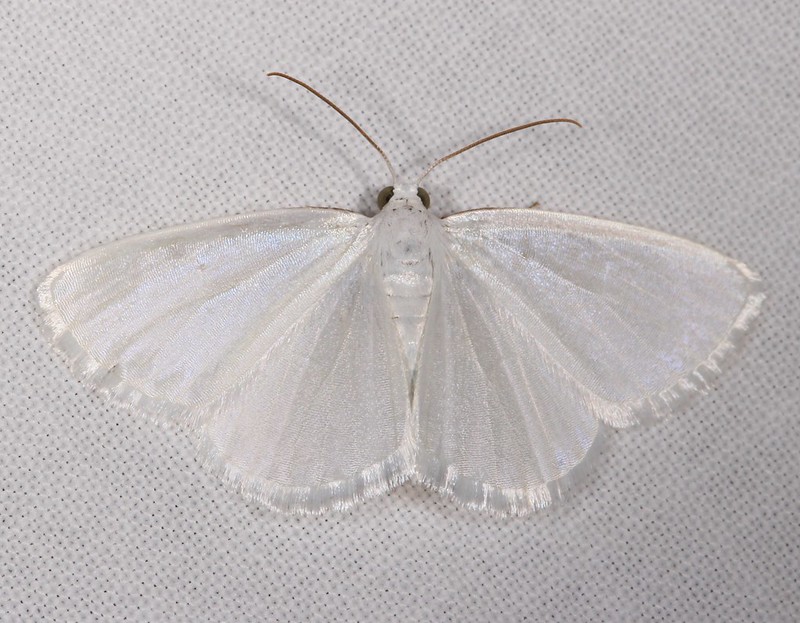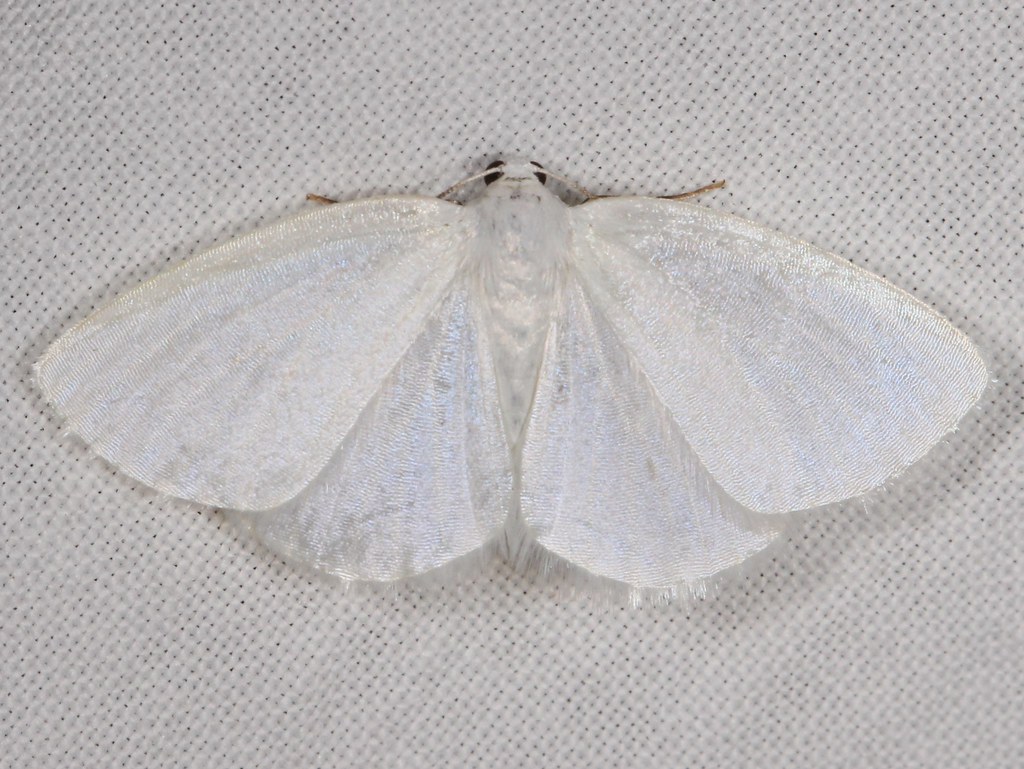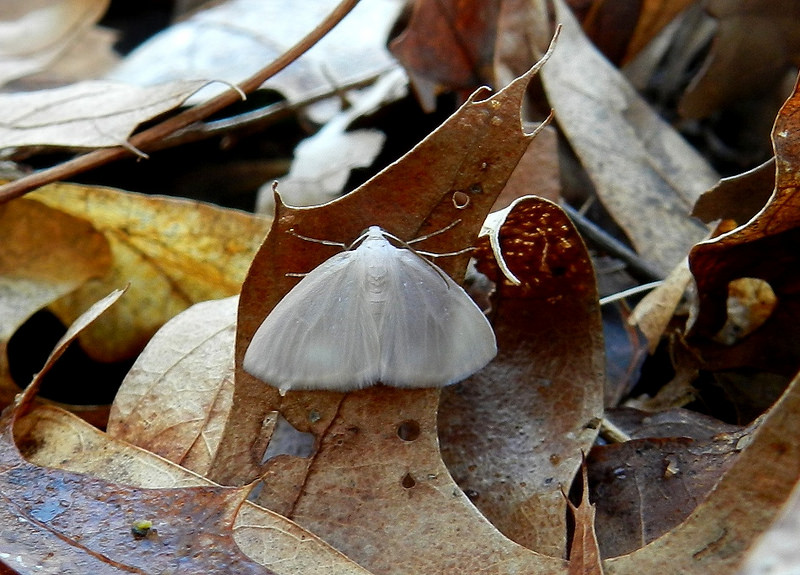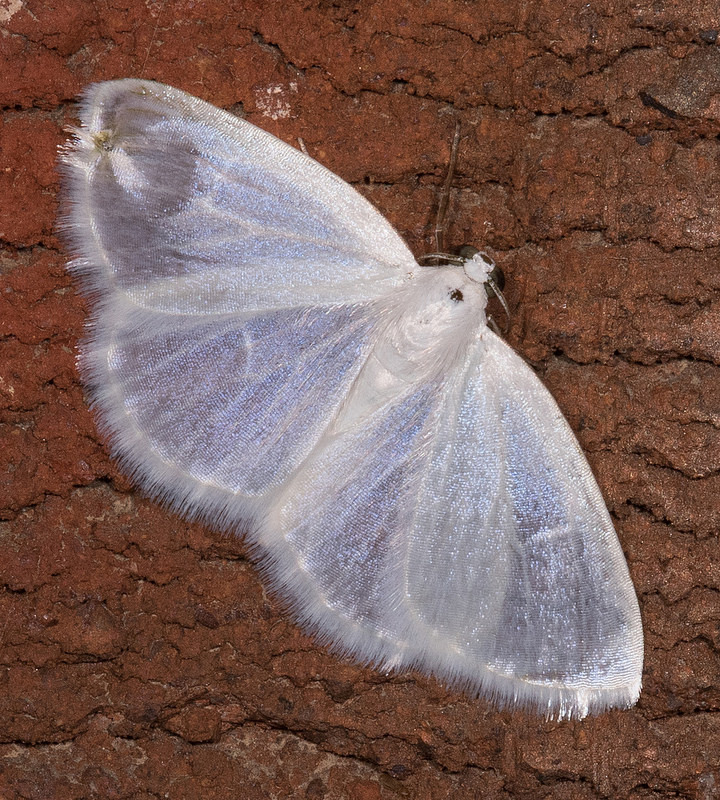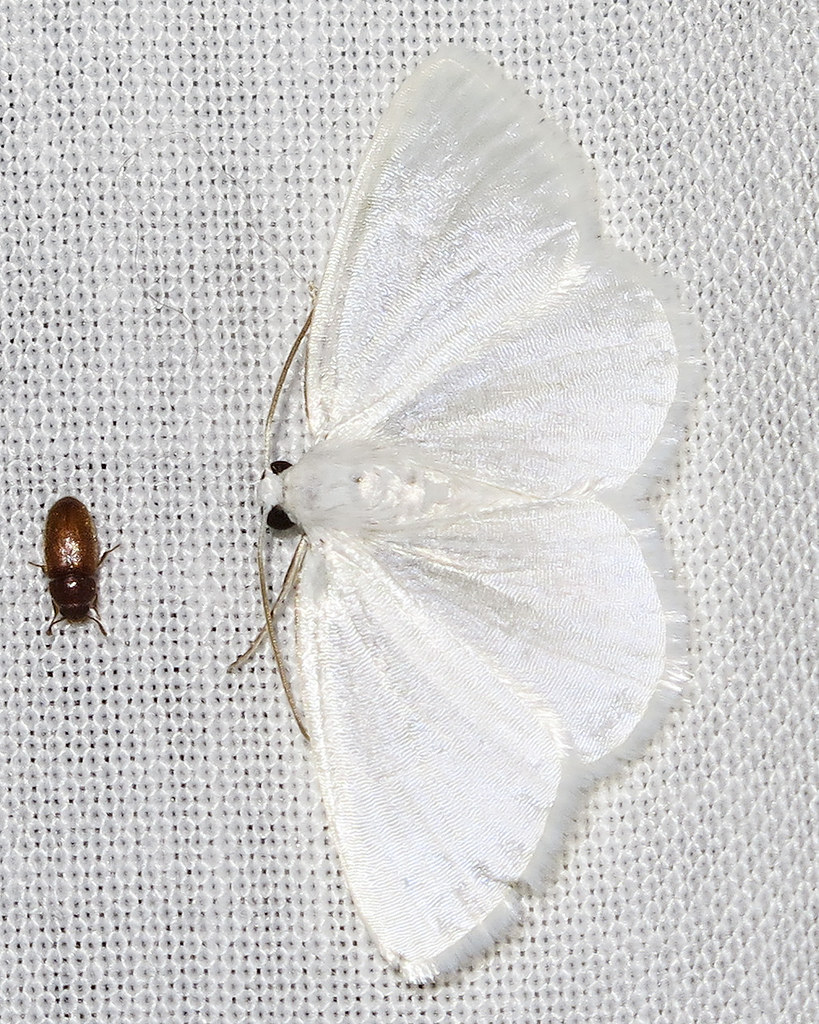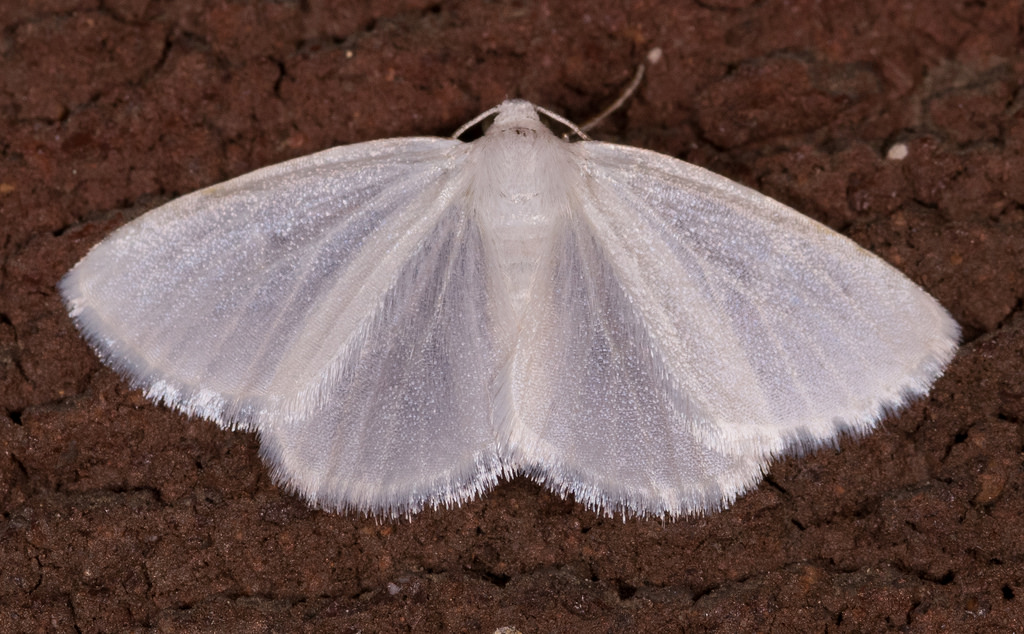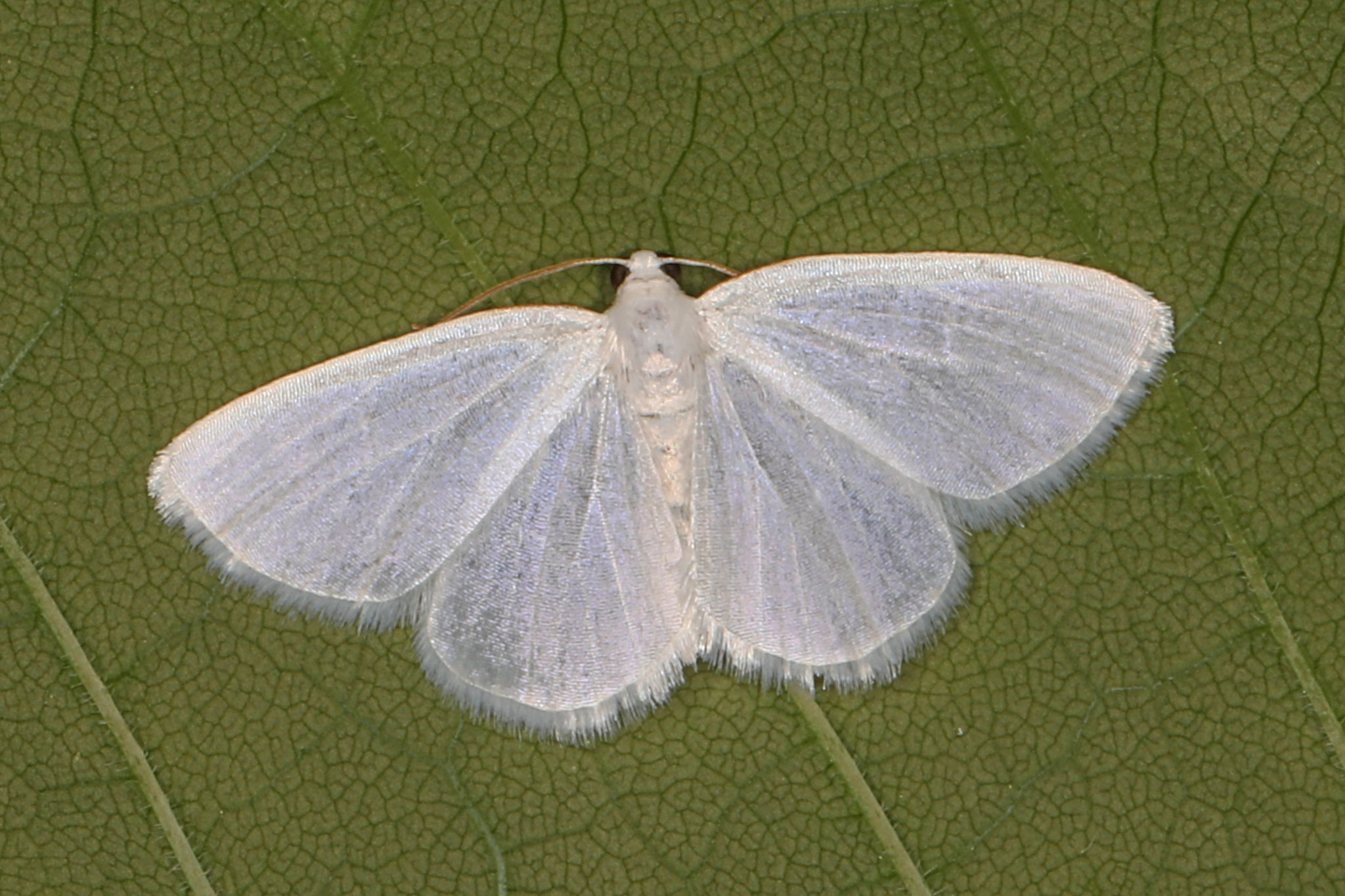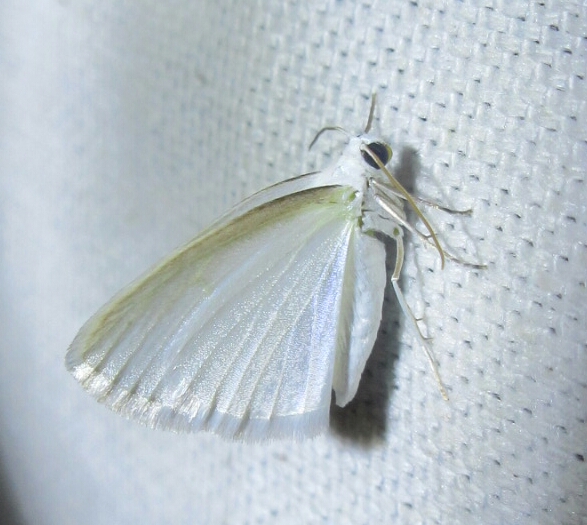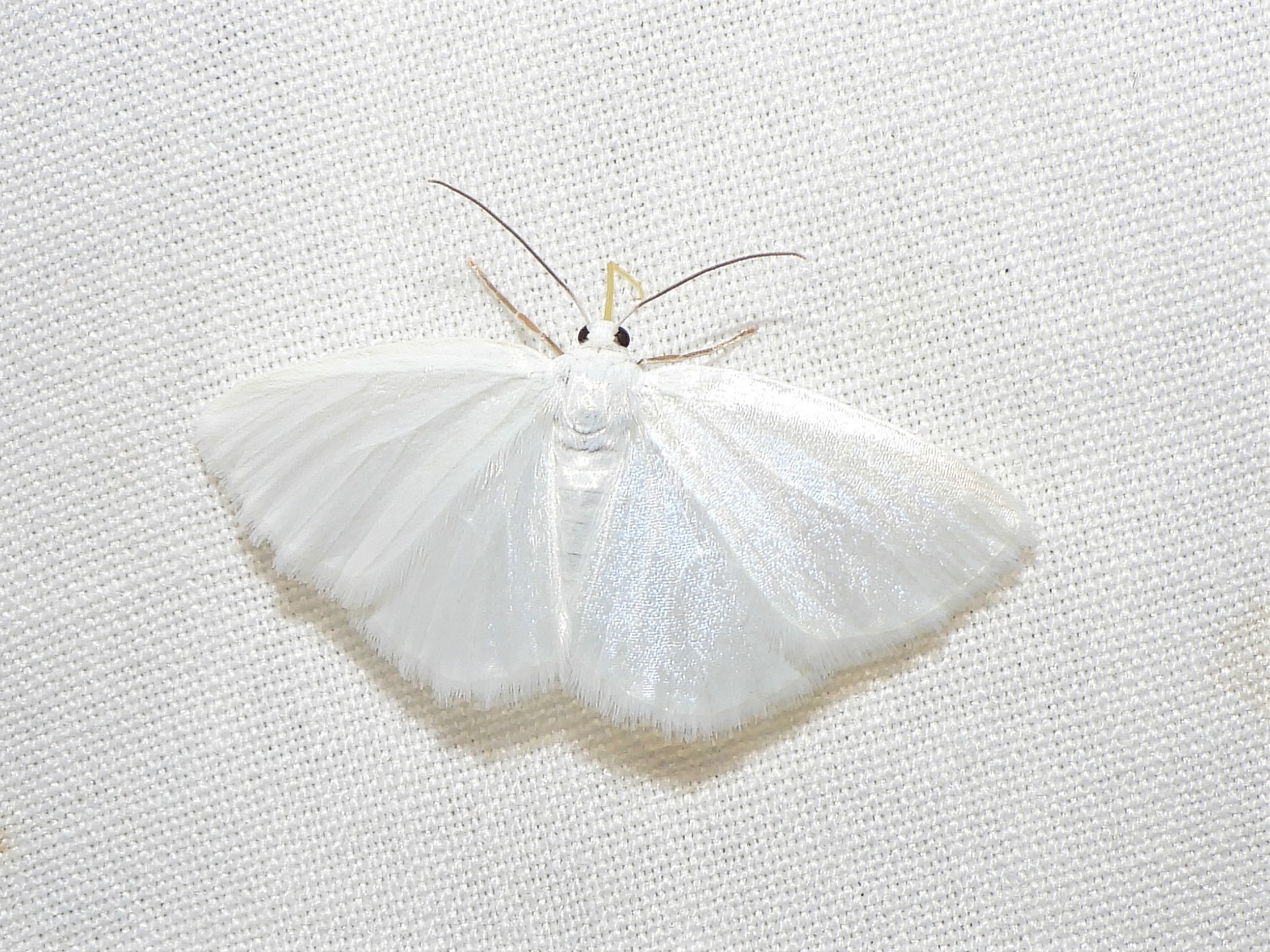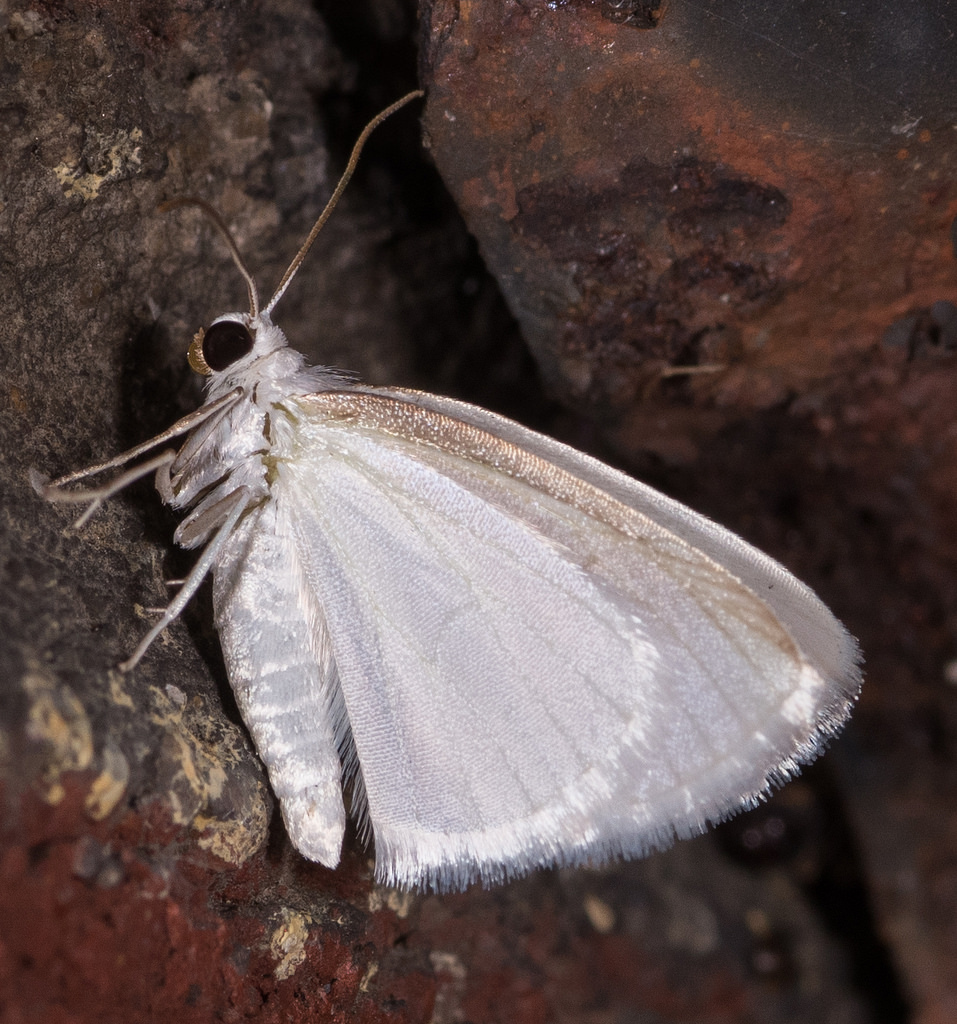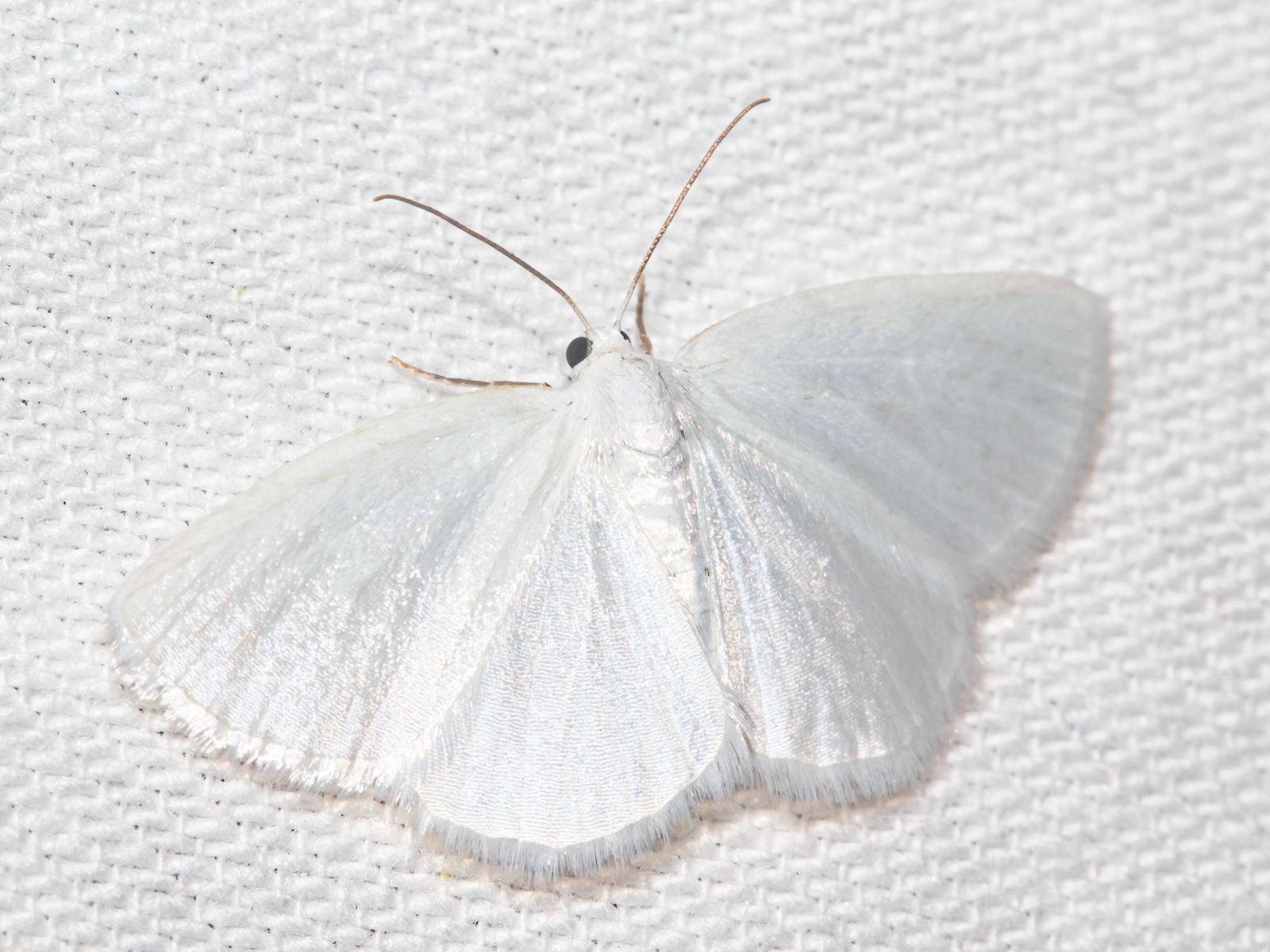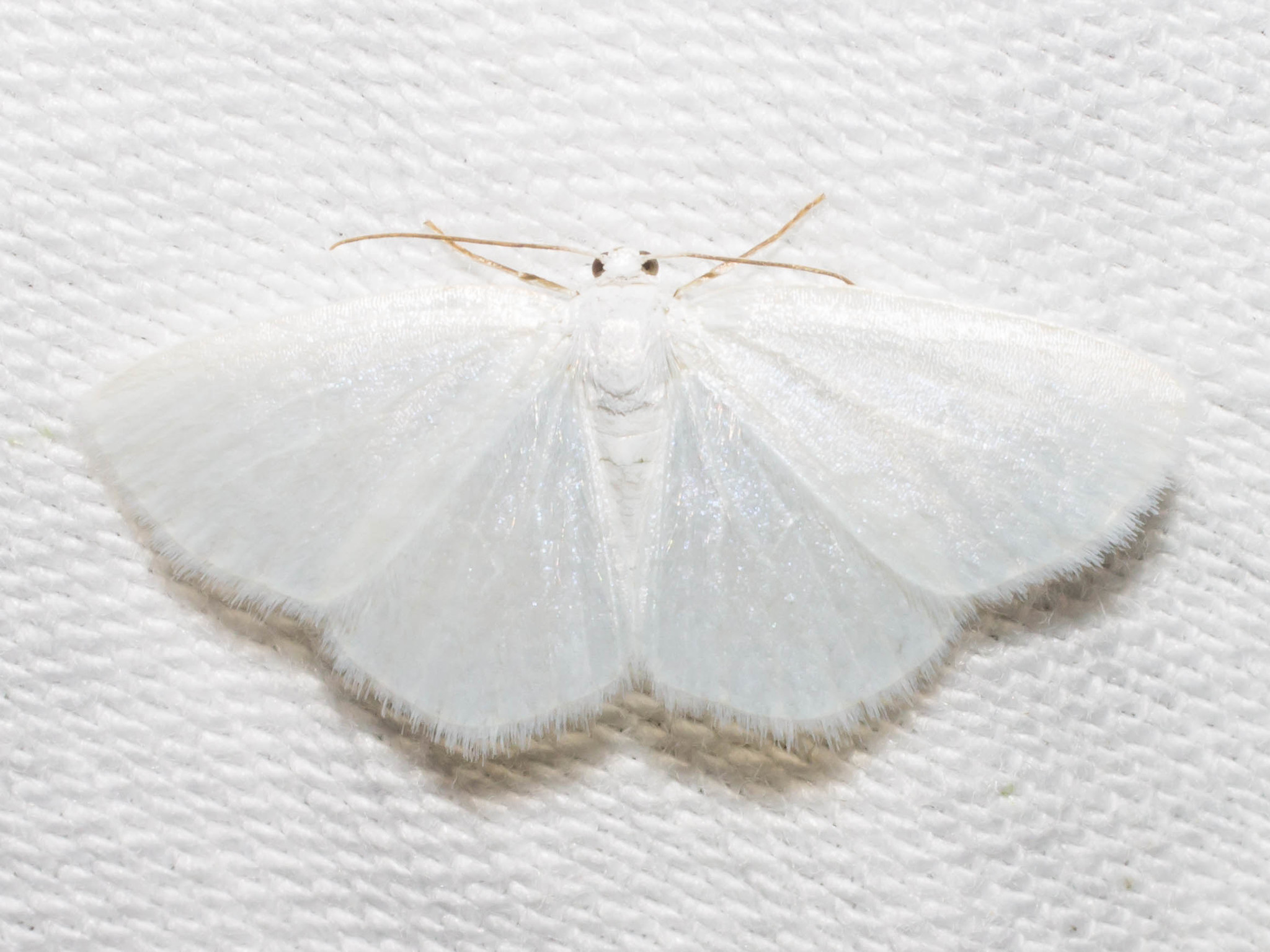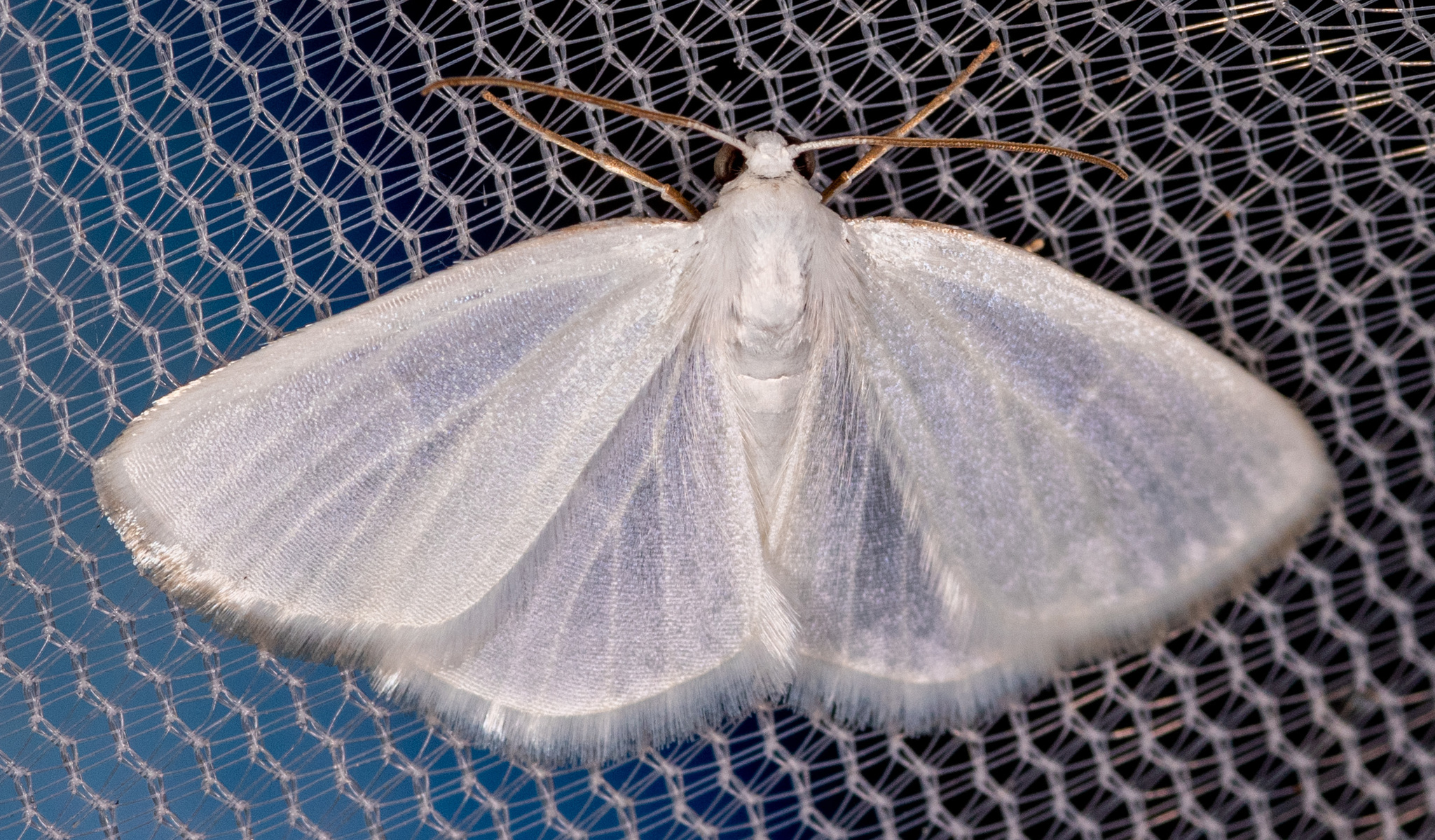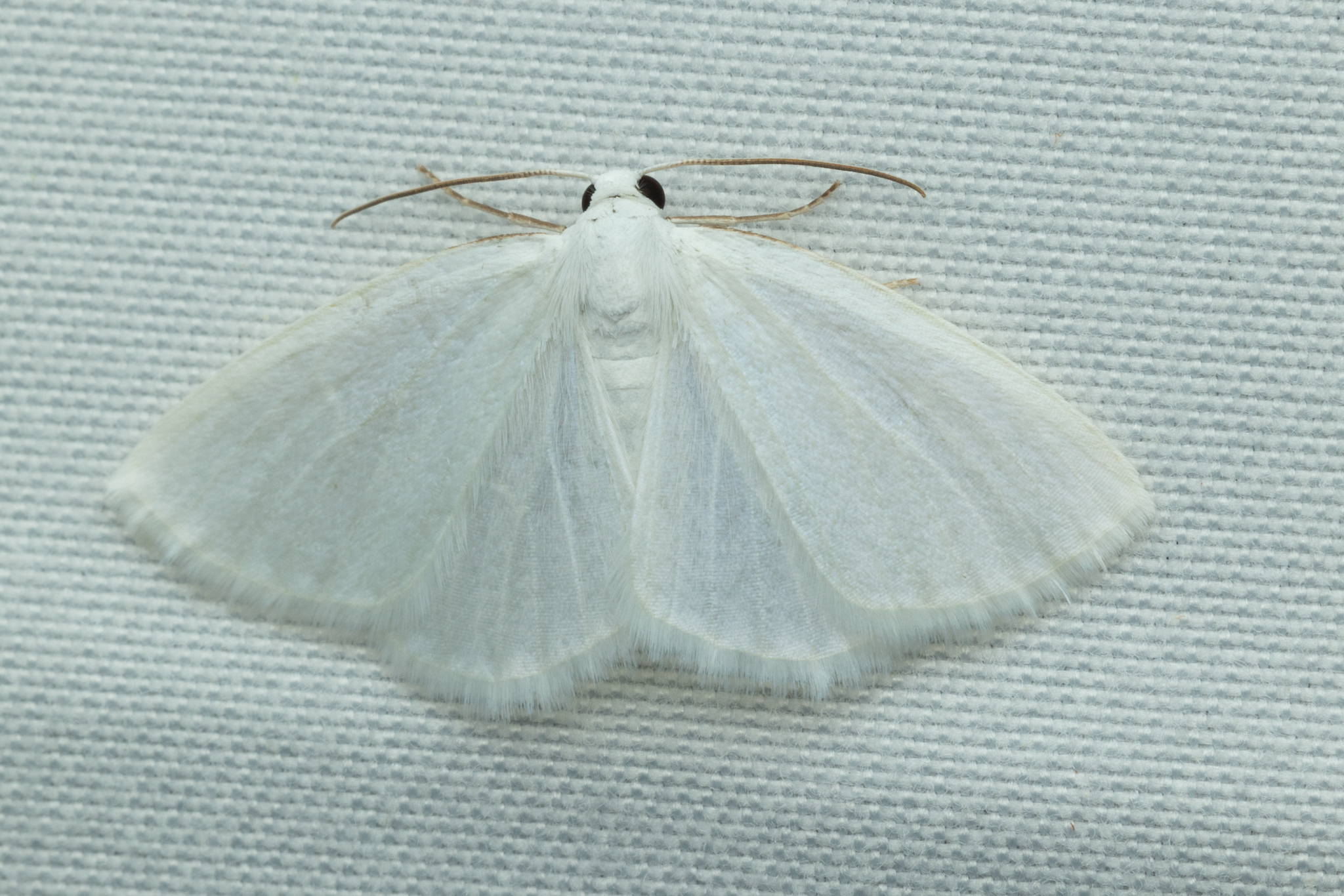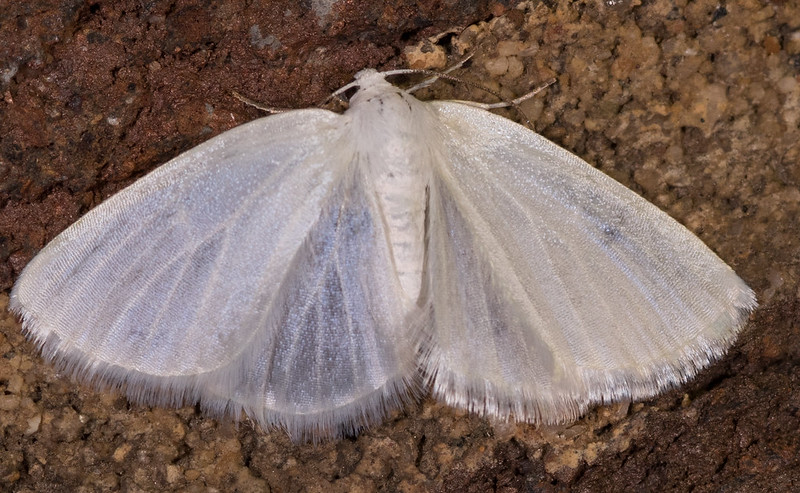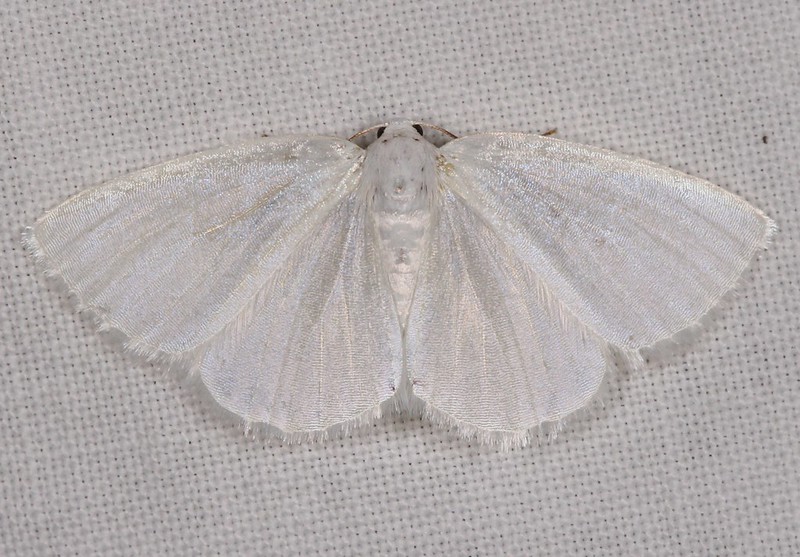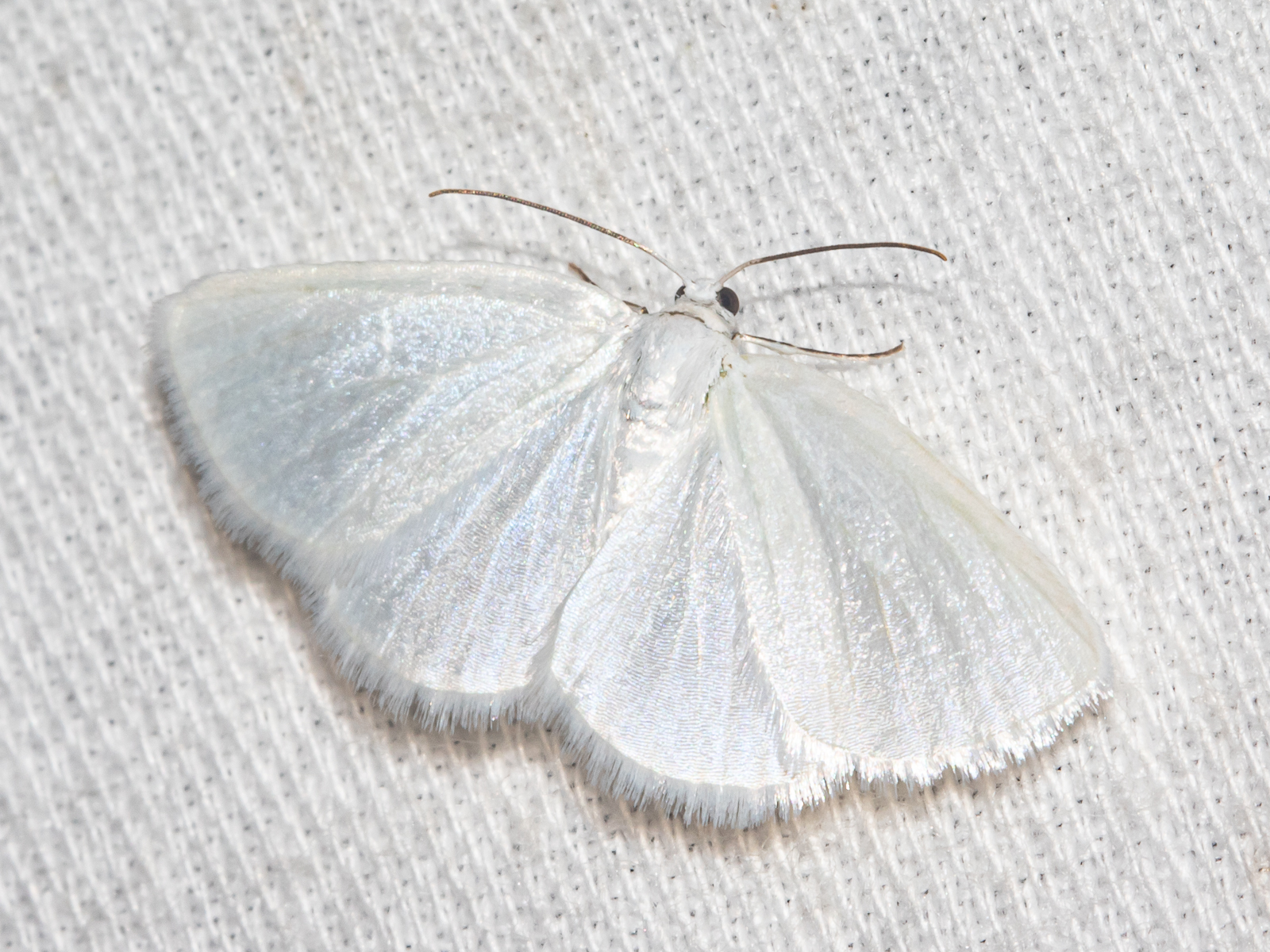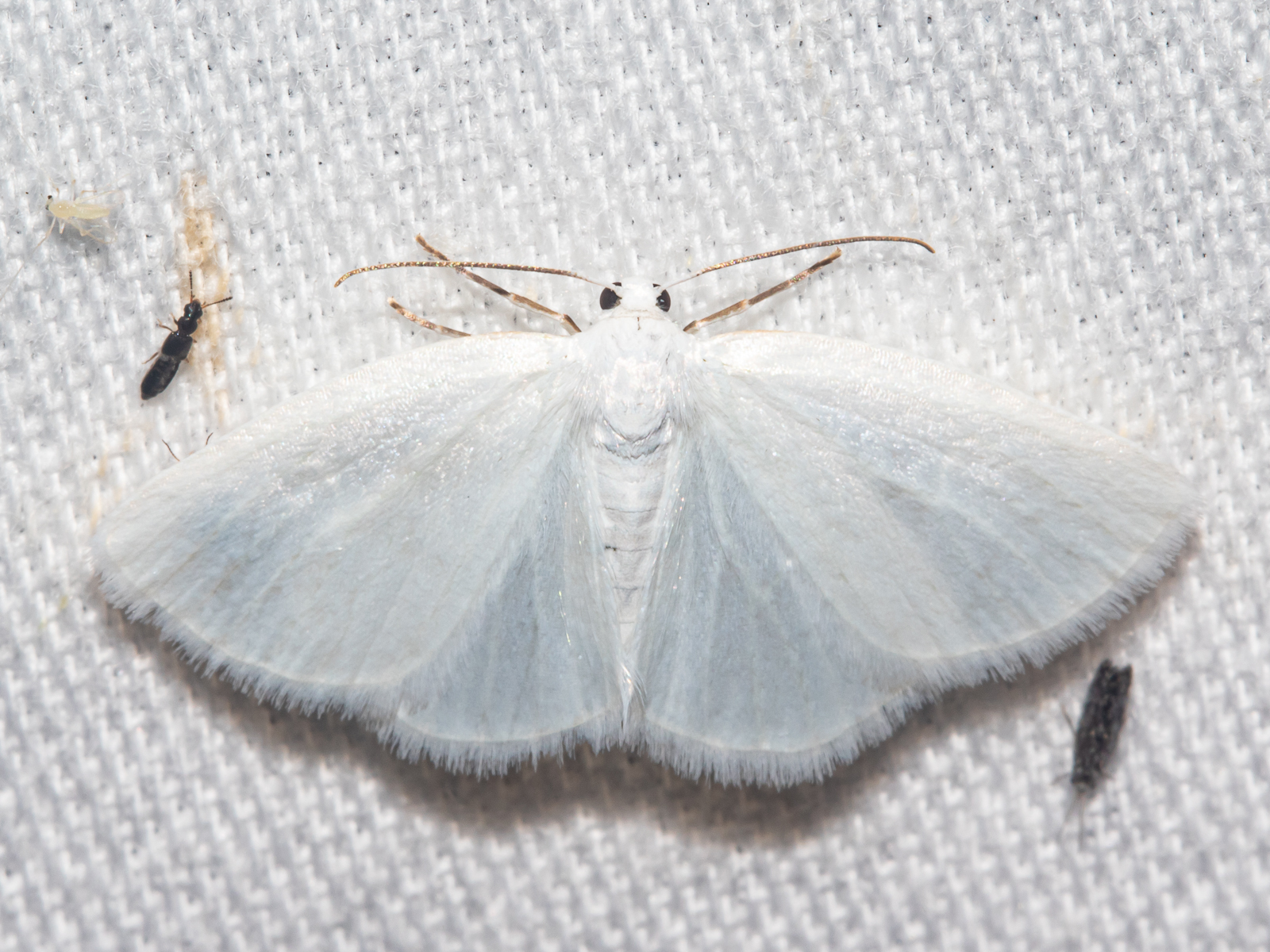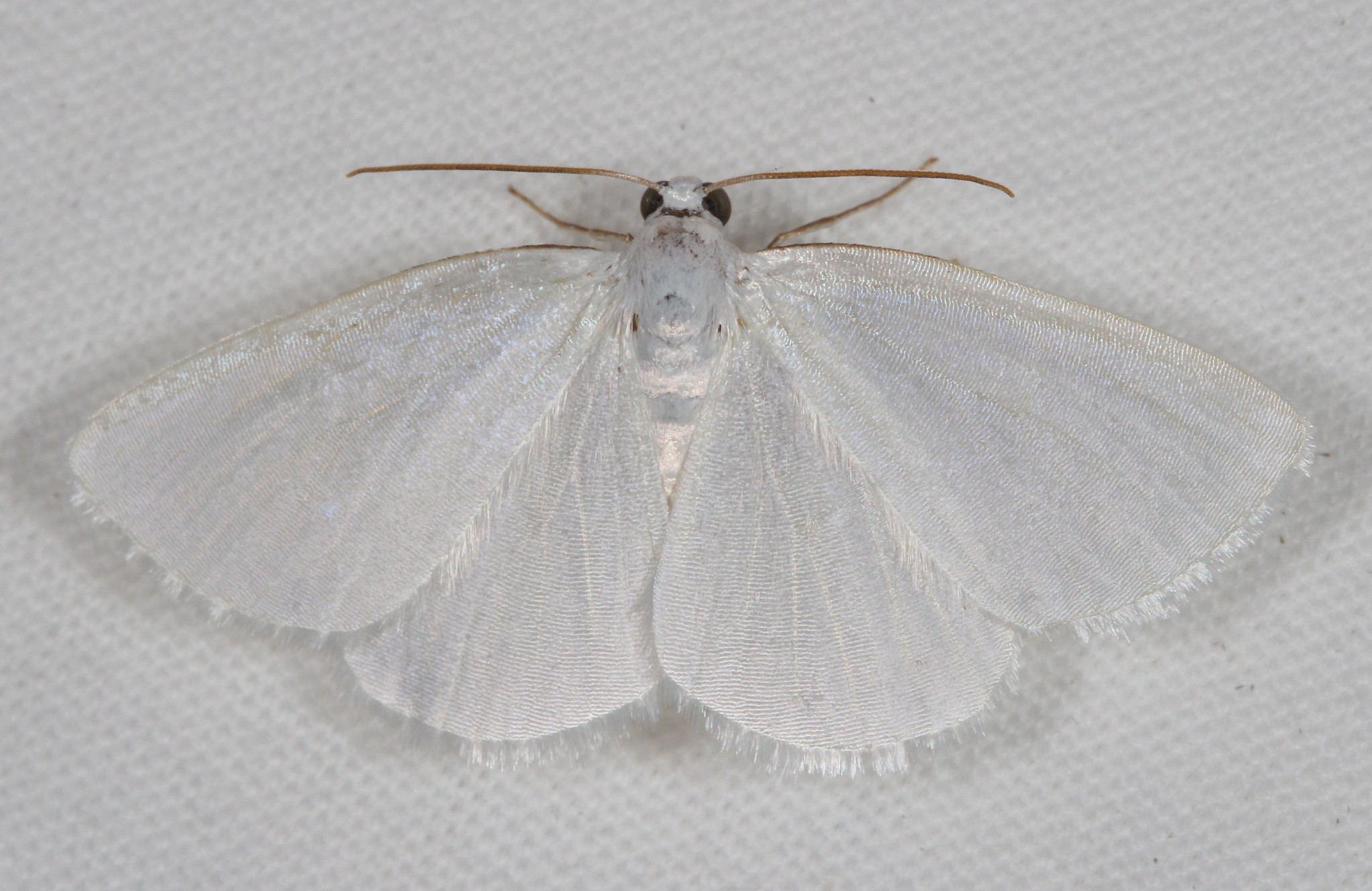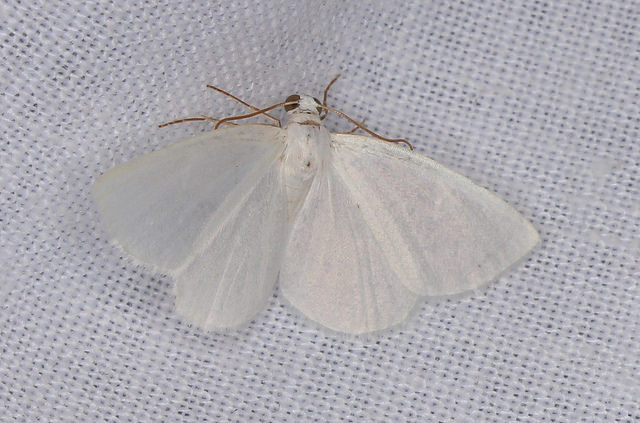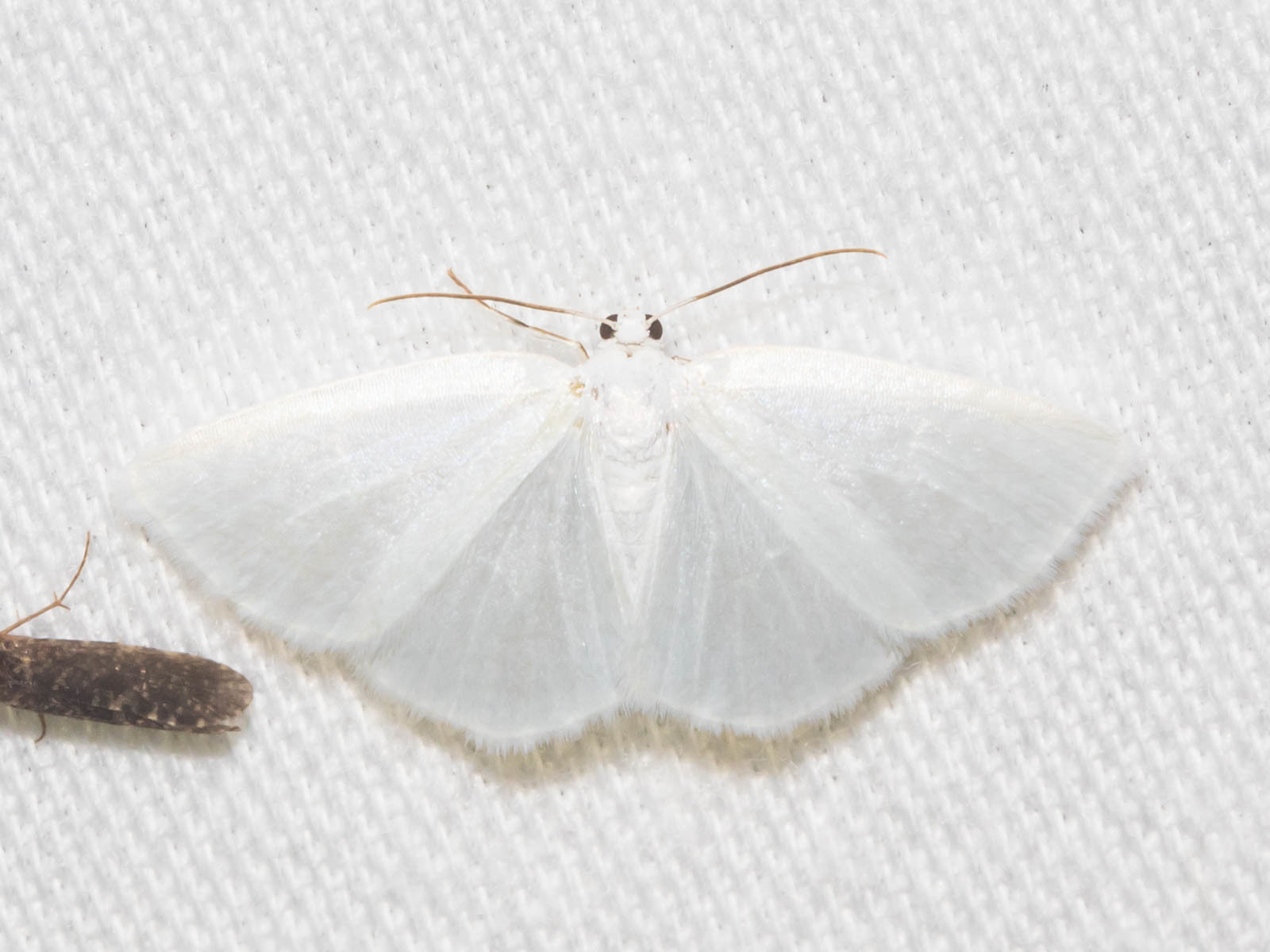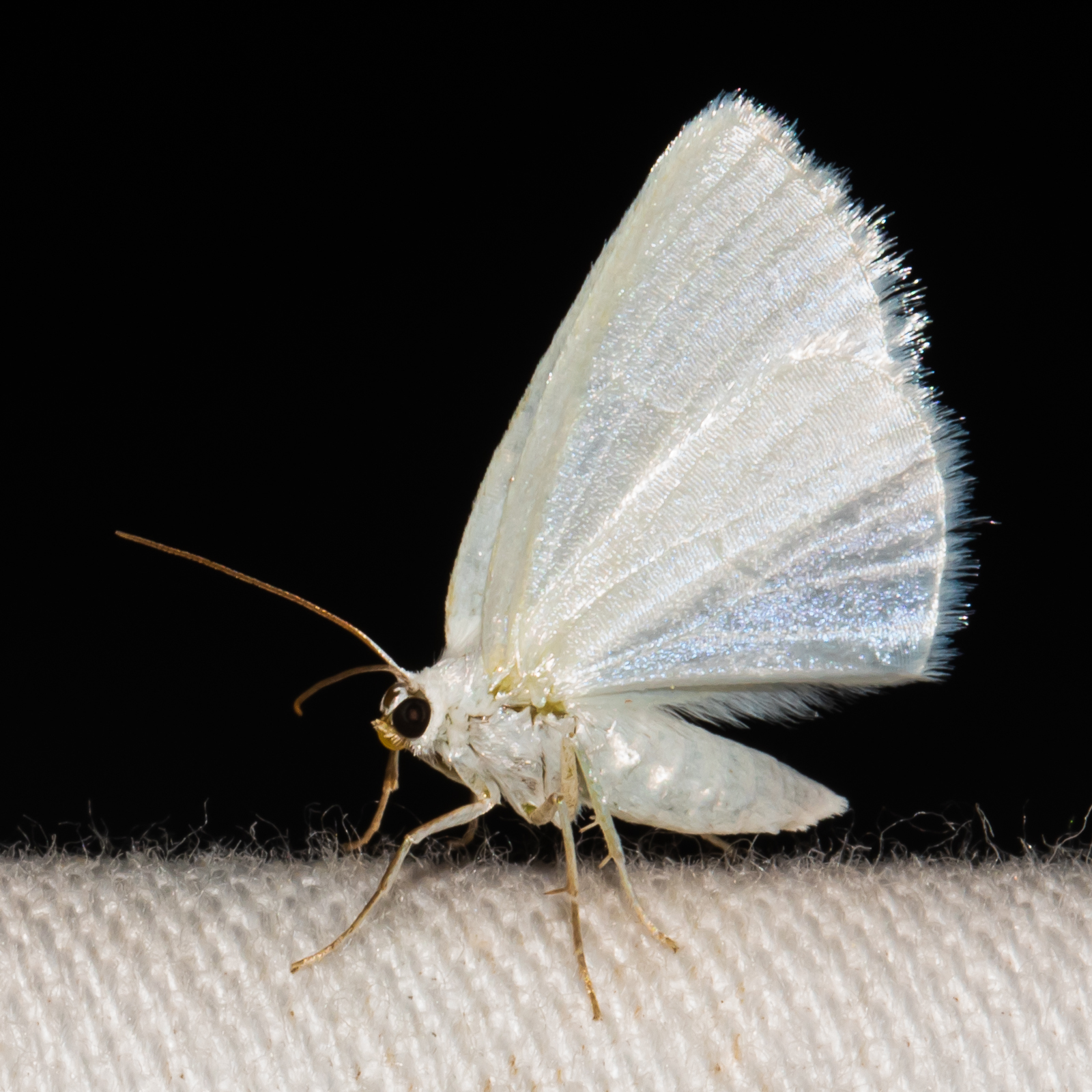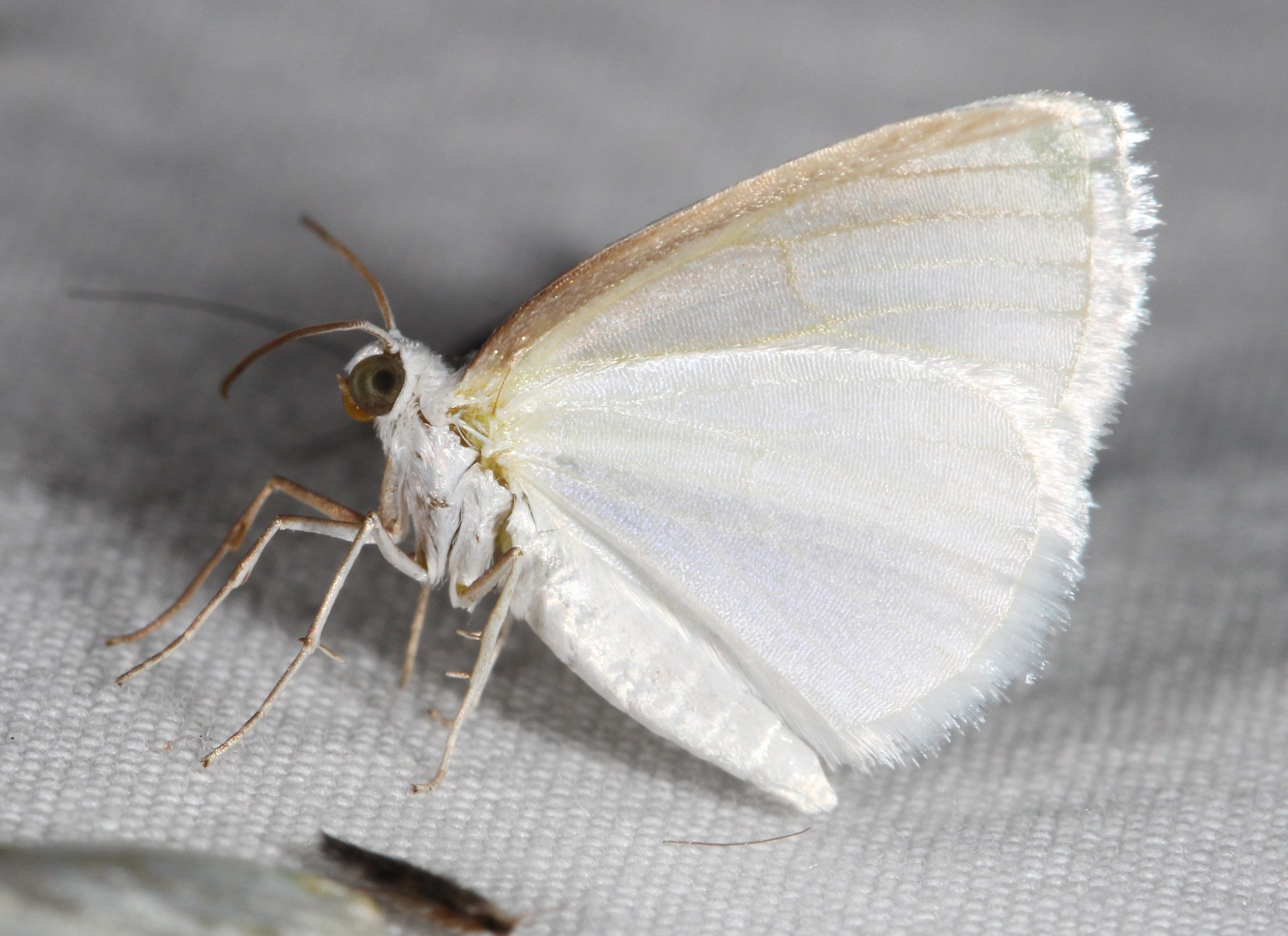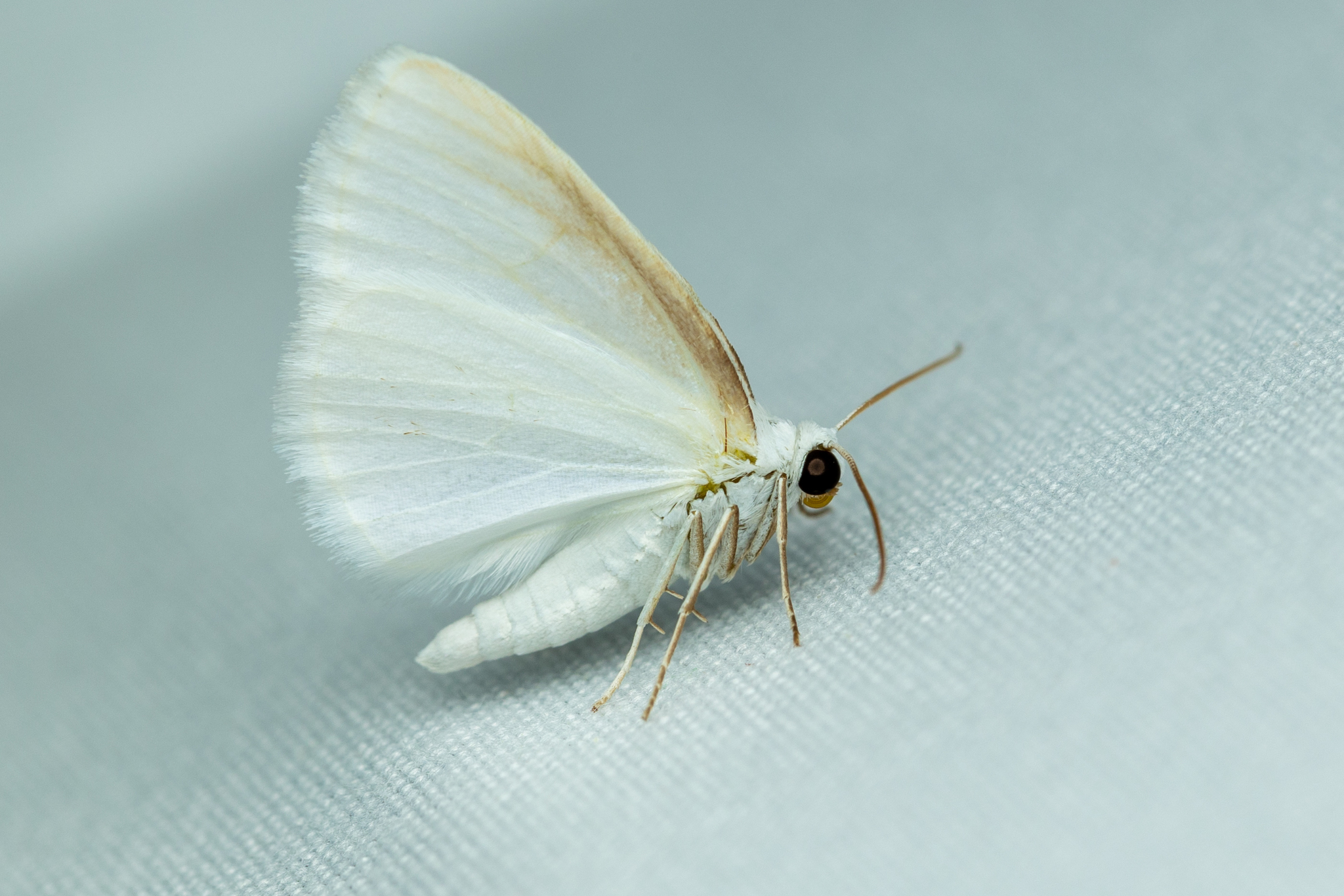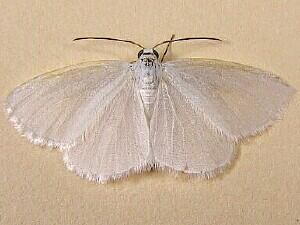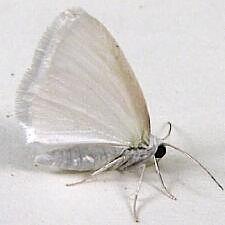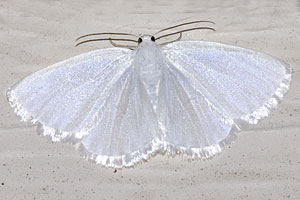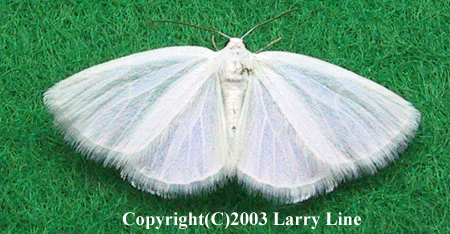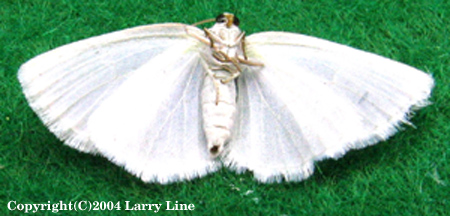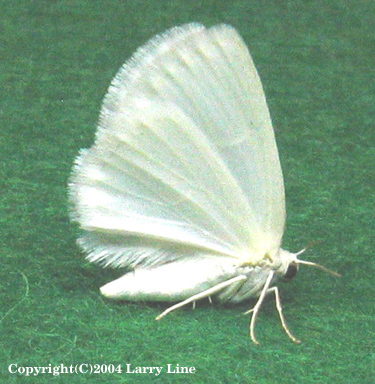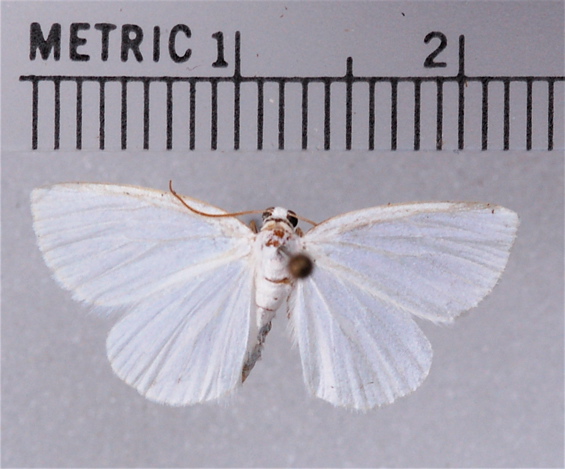Map Snapshot


















393 Records
Seasonality Snapshot
Source: Wikipedia
| Lomographa vestaliata | |
|---|---|

| |
| Scientific classification | |
| Domain: | Eukaryota |
| Kingdom: | Animalia |
| Phylum: | Arthropoda |
| Class: | Insecta |
| Order: | Lepidoptera |
| Family: | Geometridae |
| Genus: | Lomographa |
| Species: | L. vestaliata
|
| Binomial name | |
| Lomographa vestaliata (Guenee, 1857)
| |
| Synonyms | |
| |
Lomographa vestaliata, Also known as white spring moth or Spring faerie, is a moth in the family Geometridae. The species was first described by Achille Guenée in 1857.[1] Adults are diurnal and on wing in spring, usually found around the cestrum nocturnum tree, pollinating their flowers
Description
[edit]The white spring moth has a wingspan of 15–23 mm and rests with its wings open, exposing both its forewings and hindwings. Its head, body and all four wings are solid white, lack markings and appear shiny or translucent. The outer margins of all four wings are fringed.[2]
Range and Habitat
[edit]It is found in North America, where it has been recorded in Newfoundland west, south-eastern British Columbia, south Florida, Texas and Mexico. The species prefers dry climates and their habitat consists of xeric shrubby edges and woodlands.
Ecology
[edit]The larvae have been recorded feeding on Prunus, Cestrum,Crataegus, Sorbus, Malus, Physocarpus and Viburnum species.[3]
References
[edit]- ^ "911089.00 – 6667 – Lomographa vestaliata – White Spring Moth – (Guenée, [1858])". North American Moth Photographers Group. Mississippi State University. Retrieved February 3, 2019.
- ^ "White Spring Moth". www.insectidentification.org. Retrieved 2024-01-07.
- ^ Anweiler, G. G. (2007). "Species Page - Lomographa vestaliata". Entomology Collection. University of Alberta E.H. Strickland Entomological Museum. Archived from the original on January 21, 2016. Retrieved February 3, 2019.
